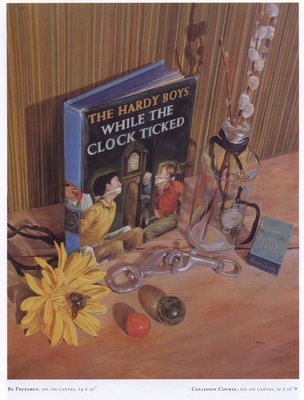Leadership in the Real World BlogNotes, links, and inspiration about topics related to personal and leadership development.
Thursday, February 22, 2007
Leadership Lessons from Howard Tullman
Crain's Chicago Business recently posted a
short video from Howard Tullman that I recommend you take the time to watch. I appreciate the clarity in which he communicates the essence of what it means to lead. Though his lessons are tuned for entrepreneurs, they can easily apply to anyone who leads, whether a team, a department, or an entire company.
Key lessons to highlight include:
Mistakes are inevitable. Admit, fix, and forget them. One of the great frustrations as an executive coach is to work with someone that tries to be so perfect that they won't make a mistake. Clearly that's impossible. We regularly work with our kids on this: when you make a mistake, admit it. Fix it. Then get past it. Learn from them, for sure, but you can't obsess over them or you will not lead.
It's about winning, not being right. In our e-learning workshop, we talk about the difference between positions and interests. Too often people get wrapped up into their positions, having to be "right." I like how Tullman states "It's about winning, not being right."
Tell a simple story: who are we, where are we going, and why. I find many aspiring leaders who are "how" people: they want to cut to the To-Do's and tasks right away, without first figuring out the "what". In our customized leadership workshops we coach leaders to first answer "Where?", "Why?" and "What?". Once leaders answer those questions, then you can get to the "How?", "Who?" and "When?".
Keep raising the bar. Keep getting better. Celebrate successes but don't get complacent.
Don't wait until it's perfect. Start with what you have.
Look for people who want to build a career, not just a job. Presenteeism (employees who are at the worksite regularly, but for a variety of reasons, are not producing as they should) reportedly accounts for 80% of lost productivity. One of my biggest staffing fears is not those who leave, but those who have left but are still with us.
Surround yourself with people who are different from you. It took me too many years to figure this one out. Now I cherish the principle, which helps me from driving over a cliff in business.
Having to fire people comes with the job. It can be done respectfully, but if your desire is to be popular, it will get in your way.
Part of a leader's job is to be an absorber of uncertainty and anxiety. Things can be ambiguous, but as a leader, we must continue telling the story, keeping people focused on the vision and direction. If we are freaking out when things get tough, it will simply spread the anxiety and be a distraction.
In my book "Navigating the Winds of Change: Staying on Course in Business and in Life", I talk about the concept of keeping your eyes on the horizon when the wind and waves are raging. It's not only good advice for sailors: it works for leaders as well.
I commend Mr. Tullman's video for your viewing pleasure and personal development.






































